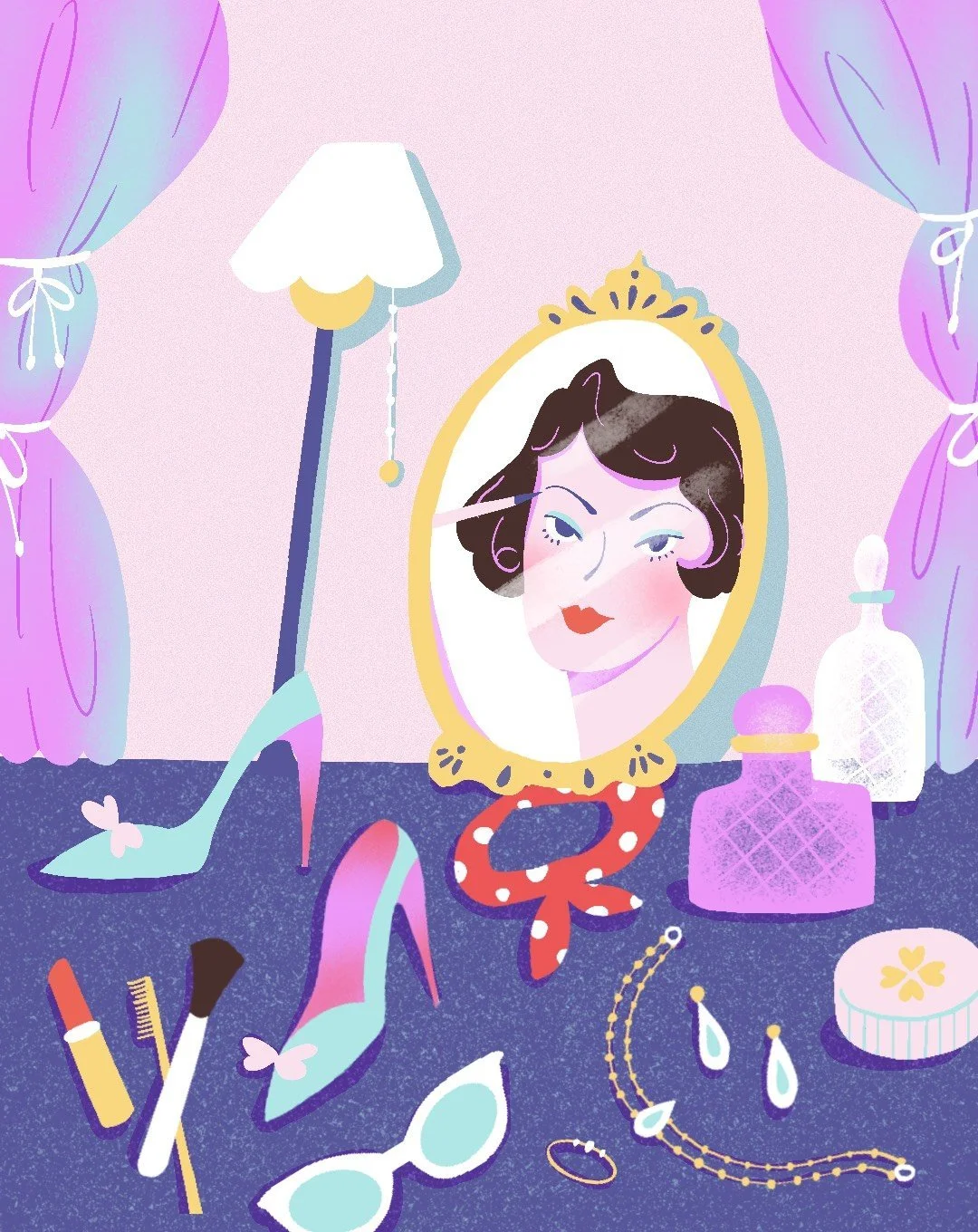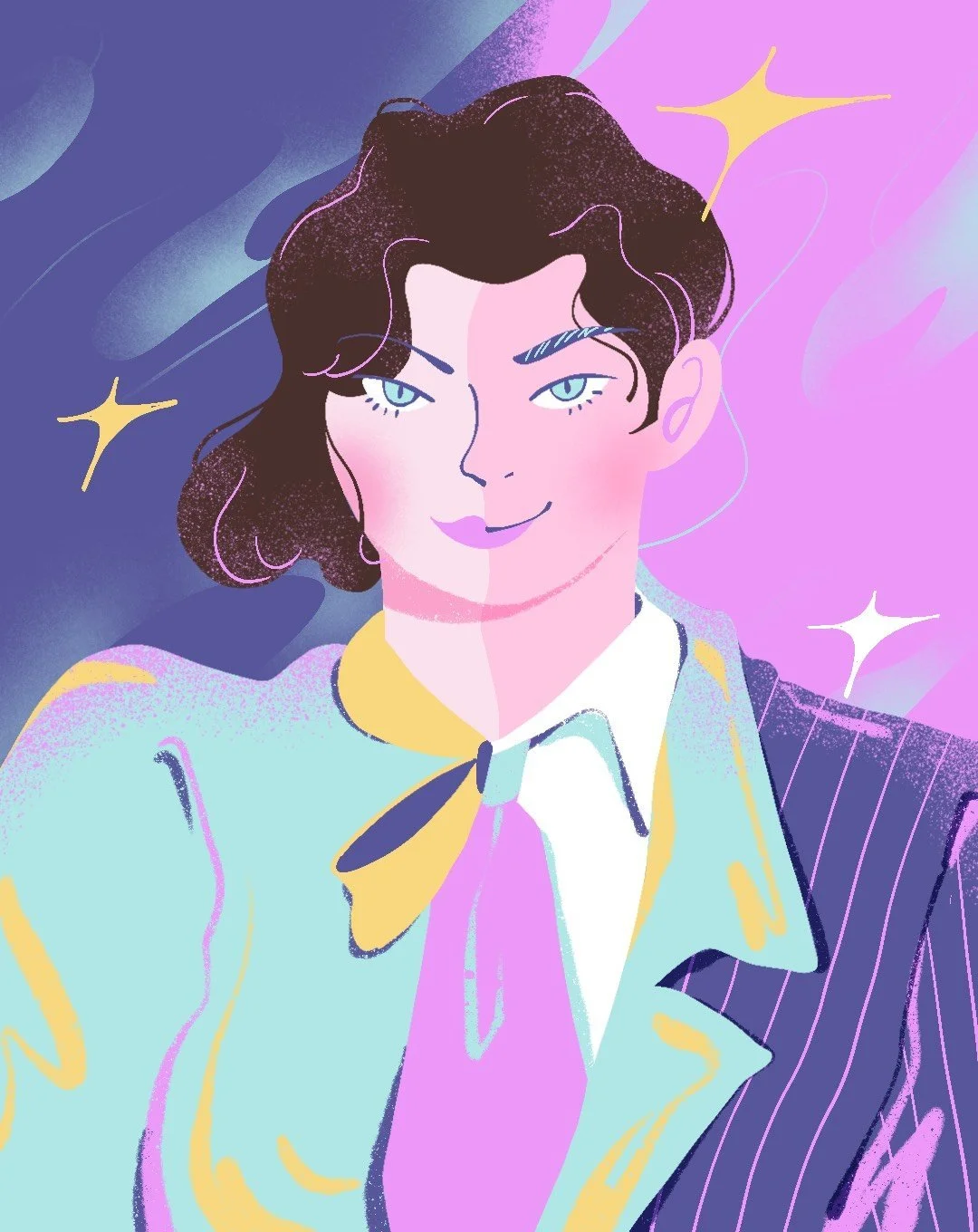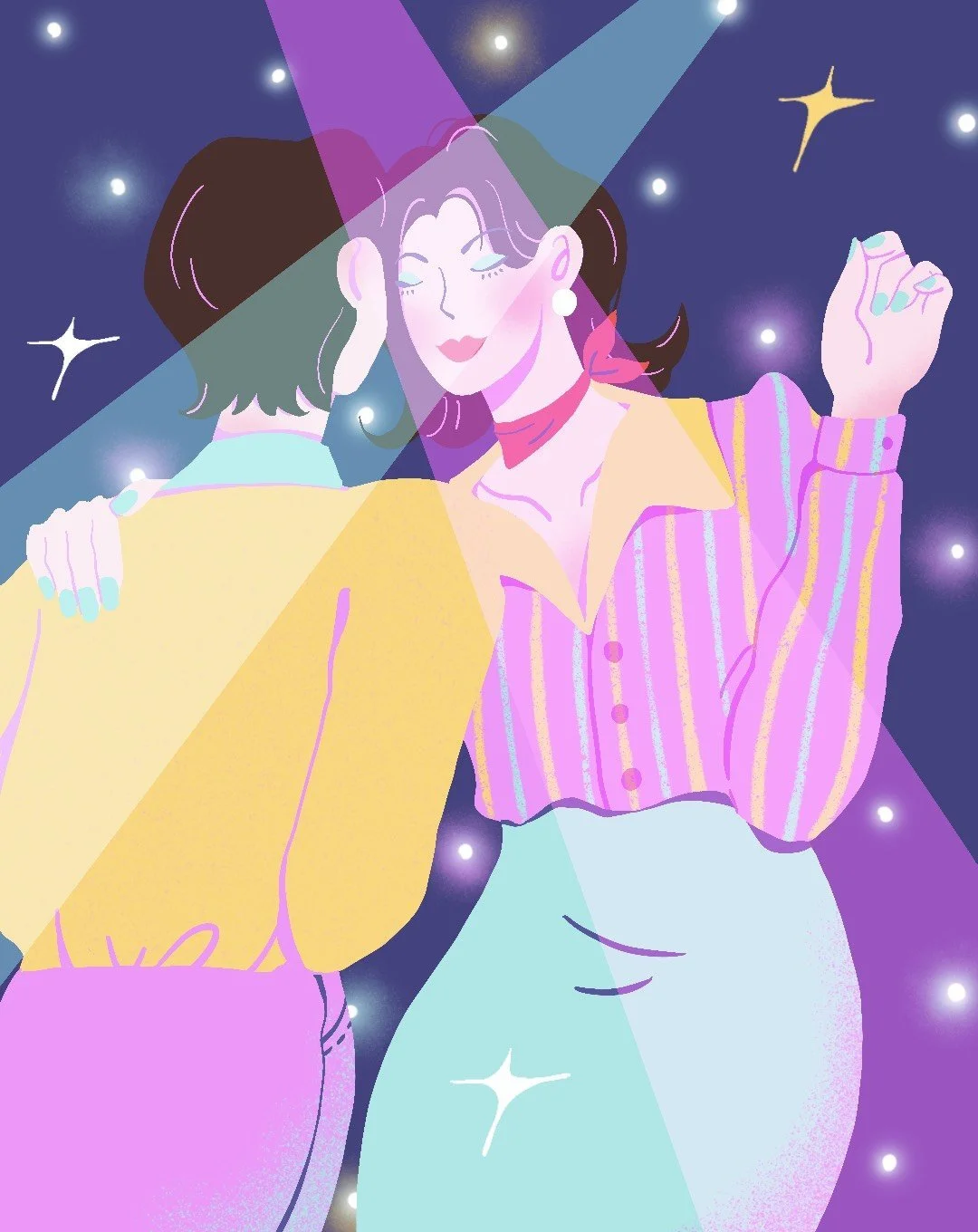Dressing Dykes: Femme Fashion History
Make it stand out
We’ve all heard the word “femme.” Most of us have seen it emblazoned across the highstreet or used in phrases like “women and femmes” and “queer femme”. Most of the time, the specific lesbian history of “femme” is invisible. This lesbian history is a rich and a complex one, going back to the lesbian bars of the 1950s and even further, defined by clothing and makeup but also by actions and sexuality. Femme is a concept that has been repeatedly misused and misunderstood. The misuse of “femme” appears in phrases like “women and femmes”, inherently tying womanhood to femininity, which - as any butch would attest to - is far from the truth. Its misunderstanding appears in lesbian feminist politics of the 1970s and 80s, where the butch/femme dynamic was considered oppressive.
For lesbian feminists, butches and femmes were reproducing heterosexual relationship dynamics in their masculinity and femininity, apparently confirming that in all relationships someone did have to wear the trousers. Femmes, in their lipstick and high heels, were thought to be the opposite of radical. If a lesbian wasn’t dressed in the androgynous 70s “dyke uniform” of jeans, t-shirts, or maybe a pair of dungarees, then she might as well have not been a lesbian at all. But what isn’t radical about a femme dressed up for a female lover? A femme who walks through the city without a man?
(Brassaï, ‘Le Monocle, the Bar, Paris.’ 1933, Paris. Museum of Modern Art, New York City.)
Femme has meaning in lesbian history and particularly in lesbian fashion history. Its meaning is flexible, but also somehow precise. It’s something that I know I am not, despite regularly wearing makeup and dressing head-to-toe in the colour pink. Lesbian and more broadly sapphic culture is not separated into “butch” (or even “masc”, as TikTok seems to prefer) and “femme”. There’s a variety of clothing, gender, and sexual expression between and outside of these categories. This means that they’re all the more important to highlight - what, exactly, is femme? How is it specific, and what are the lesbian roots of femme-ininity? What is femme fashion?
___STEADY_PAYWALL___
I want to take us on a trip back to the 1920s. At this point, although many lesbian relationships consisted of a masculine and a feminine partner, they weren’t described as butch and femme. Sexologist Havelock Ellis tried to define these relationships with the terms “congenital invert” and “pseudo invert”, referring to an active, masculine partner and a “womanly woman.” We might think of these descriptions as limiting or offensive now, but some lesbians like power couple Radclyffe Hall and Una Troubridge were all too happy to use them. However, Hall and Troubridge were both rich and existed in exclusively upper-class society. “Invert” was content to stay there with them.
In communities made up of working-class lesbians, language was different - but an early culture that would evolve into butch/femme existed here, too. Mabel Hampton, a Black lesbian who worked as a dancer in Harlem Renaissance New York, described the life and language of working class Black lesbian communities in the 1920s and 30s. When asked in a 1988 interview “what was the woman called who wasn’t the butch?” she replied “the other ladies… oh this is my, this is my friend, my wife.” These “friends” or “wives” soon evolved into a distinct category: femme.
Mid-century lesbian culture was defined by the lesbian bar. We often think of them as safe havens, but the lesbian bars of the past were all too often subject to police raids. Despite this, they were one of the few places where lesbians could act and dress as they pleased. This is often studied in relation to butches, who would wear trousers at the bars when it was dangerous to wear them almost anywhere else. But what about the femmes?
Femme didn’t always mean feminine. Of course, many femme outfits consisted of high heels, tight skirts, a cinched waist and carefully applied makeup, but these could become an issue if they were read as heterosexual. Lesbians and queer women in the 21st century still deal with this misrecognition, but in the 1950s it was a real problem. How to be recognised when it’s unsafe to announce yourself with words? And you did have to be recognised - it would ensure entry into the clubs, or the offer of a drink or a dance. Alix Genter, in her fantastic article ‘Appearances Can Be Deceiving: Butch-Femme Fashion and Queer Legibility in New York City, 1945-1969,’ describes how: “[some femmes] took on creative strategies, such as displaying aspects of butchness, in order to “prove” themselves before returning to their preferred feminine styles.”
(Lillian Foster, femme and “wife” of Mabel Hampton, c. 1940s. Lesbian Herstory Archives, Mabel Hamton Collection. Copyright of the Lesbian Herstory Educational Foundation.)
These “aspects of butchness” would often continue to be incorporated into the femme wardrobe. In Arlene Istar’s essay ‘Femme-dyke’, she writes that “I do not fit anyone’s stereotype of a feminine woman, any more than I fit anyone’s stereotype of a dyke [...] The boys think I’m butch, and the girls think I’m femme.” Joan Nestle, in her 1981 article ‘Butch-Femme Relationships’, described how “In the late 1950s I walked the streets looking so butch that straight teenagers called me a bull-dyke; however, when I went to the Sea Colony (a working-class lesbian bar in Greenwich Village, New York) looking for my friends and sometimes for a lover, I was a fem.”
“When femininity is worn by a lesbian body and desired by another woman, its is the opposite of a patriarchal tool.”
Joan Nestle is one of the leading voices on femme-ininity, being one of the founders of the Lesbian Herstory Archive as well as a writer and editor. Many of the femmes I’m quoting today have their words preserved in Nestle’s book, The Persistent Desire: A Femme-Butch Reader (1992), which is one of the golden texts of lesbian culture. An idea that comes up repeatedly in Nestle’s work is how her femininity is vital to her lesbianism because it is for women. In her essay ‘The Femme Question,’ she writes that “I wasn’t a piece of fluff and neither were the other femmes I knew. We knew what we wanted, and that was no mean feat for young women of the 1950s.” Her femininity was tied to her desire for other women - more specifically, for butches. She presented herself in a feminine way not because she wanted to fit into a patriarchal culture, but to fit into a lesbian culture, one that involved wanting and being wanted. This was the same for so many other femmes, like Paula Austin, who writes in her essay ‘Femme-inism’: “I am a black self-identified femme. My hair hangs in loose curls a little below my shoulders. I often wear makeup, and I like high heels, although I seldom wear them. My femme-ininity does not make me victimized. I have a choice in what I look like and who fucks me.”
The femmes of the 50s were radical in their restructuring of femininity. Yes, feminine fashion has been a tool of the patriarchy, but that is not all it is. When femininity is reworked and reclaimed on the lesbian or otherwise queer body, it takes on vastly different meanings. When femininity is worn by a lesbian body and desired by another woman, its is the opposite of a patriarchal tool.
Madeline Davis, another femme whose writing appears in The Persistent Desire, says that femmes are “women who look and act like girls and who desire girls. We’re just the queerest of the queers.” Femme-ininity may have evolved and changed in the past decades, but it is lifted up by its history. Each femme who has claimed it and worn it has contributed their personal power to the term, and its appropriation by forces like fast fashion cannot take that away. As described in the words of Joan Nestle, Arlene Istar, Paula Austin, Madeline Davis and more, femme is liberation. It cannot be anything but.
Words: Ellie Medhurst | Illustrations: Rung-Sheng





